Our Blog
Thanksgiving Safety for Your Pets
By Katie Meneses, HR Manager
Thanksgiving is a mark that the year is almost over, when you get together to have food with your family, enjoy the big game, and relax over a long weekend. Our pets can enjoy the holidays too, especially the foods and family. But, there are risks they face that don’t affect us, especially when it comes to food. Here are risks to your pets health, as well as tips to keep things safe for your pet.

Dinner and Dessert Dangers for your Pet
There are a lot of delicious foods at every holiday get together. From the Turkey, to the pies, everyone gets excited for dinner. However. our pet can be harmed by eating the same foods we enjoy, as they pose a danger for your pet.
- Fatty foods like turkey can lead to a life-threatening condition known as pancreatitis. The bones, although tasty, are dangerous too. They can cause GI obstruction, oral trauma from sharp shards, or even fracture teeth as the pet chews on them
- Common cooking ingredients during the holidays are also dangerous to your pet. Dangerous foods include: onions, garlic, raisins, and grapes.
- Yeast Dough is common in many households that bake bread during the holidays. If ingested, it can lead to painful gas and dangerous bloating in pets.
- Chocolate is dangerous for your pet, and is often found in desserts during the holidays.
- Artificial Sweeteners, like Xylitol used in sugar-free baking, are dangerous too. It can be deadly if consumed by cats and dogs.
Safe Foods for Your Pet
While there are dangerous foods during Thanksgiving, there are also some great pet-friendly treats you can give your pets. There are many healthy, safe foods for your pet, including raw fruits and vegetables you can share with your furry friend.
Safe options include:
- Baby carrots
- Green beans
- Apples
- Chunks of sweet potato
- Plain pumpkin puree (unsweetened, and not spiced)
Clean Up to Keep it Safe for Your Pet
Make sure to keep the trash far away. The turkey carcass is dangerous for pets. If it is left sitting out on a counter, table, or even in the trash, is a deadly temptation. Make sure to dispose of it, including bags, strings, bones, and packaging, in a secure trash bag, in an outdoor container. Alternatively, make sure it is tucked safely behind a closed and locked door.
Know the Signs
It is important to know the signs that your pet has ingested something dangerous.
Signs include:
- Abdominal Pain
- Vomiting
- Diarrhea
- Hypersalivation
- Depression
- Muscle twitching or seizures
- Changes in behavior that occur suddenly, such as increased agitation or restlessness
If you notice any of these symptoms, move quickly to help save your pets life. Call an emergency veterinary clinic immediately. You may also choose to call the Pet Poison Hotline (855-764-7661) for assistance.
Prepare for Visitors
The holidays bring family and friends together. If you plan to have a full house Thanksgiving weekend, you will need to prepare to keep your cats and dogs from finding their way through the front door. Gates are a great way to keep your front door separate from your pets as people come and go. Alternatively, you can keep them on a leash, or in another room while the door is open, to prevent daring escapes.
Another precaution is to ensure your pets identity tags and microchip are up-to-date. If they do get out of your home, they are more likely to be returned to you. If your pet isn’t microchipped yet, contact your veterinarian about the simple procedure to get it done.
For more information on food safety for your pet, check out the Pet Poison Hotline for ways to keep your pet safe from toxins. If you plan to go hunting this season, you should also check out tips for keeping your pets safe, and how to Get Your Dog Ready for Hunting Season.
Disclaimer: This written content is meant to be educational and is not medical advice. Always consult a veterinarian about medical advice for your pet.
Fear Free Visits to the Vet
By Dr. Maria Krenz, DVM – ZimmVet-763-856-4848
Is your pet fear free at the vet?
Veterinary visits are part of keeping your pet healthy, and keeping them fear free is beneficial. With a positive attitude and a little bit of training it can be a better experience for your fluffy friend. Ask your veterinary team to find what works best for your pet. Ask for medication to make visits go smoothly.

Treats
One way to help your pet stay fear free is using treats. Round up your pet’s favorite treats and wear your training treat pouch when visiting your veterinarian. A reward of small pieces should be given regularly during your pet’s veterinary visit. Cats may warm up to catnip or a small amount of canned food fed on a spoon during the visit. Talking in a calm voice and having your pet on a comfortable harness, such as the easy walk harness, can help.
Avoid aversive methods such as jerking on the leash, using prong or choke collars, electric collars, yelling or physical punishment. Dogs exposed to these methods are 2.2 times more likely to be aggressive to people outside the home.
Come for Positive visits
Pets should be brought to the veterinary clinic for positive visits. Come to just sit in the lobby for a minute and give treats to your pet. Or practice having your pet sit on the scale while giving treats. Try to do this at times when it is less busy. Choose a time when there are not a lot of other pets around such as mid-week during the middle of the day. ZimmVet currently has limited lobby space due to the remodel. We recommend waiting until the construction is finished for positive visits.
Medications
Medication and sedation are not reserved as a last resort. If your pet is fearful and will not take a treat at your veterinarian’s office, your pet would benefit from additional training along with anti-anxiety medications. There are different options for dogs, orally before the appointment. Dogs commonly benefit from Trazodone, an oral medication, administered 2-3 hours prior to the appointment while cats respond well to gabapentin. Discuss with your veterinarian what will be best for your pet. Pets that have high anxiety levels even with oral medication will benefit from an injectable sedative once they arrive in the clinic. There are natural options include the thundershirt, rescue remedy and pet pheromones such as adaptil and feliway that can help with mild cases of anxiety.
Know Your Pet
If your pet gets worked up around other animals, request to go immediately to an exam room. At ZimmVet we have a side entrance that pet owners can avoid the lobby completely. Slippery floors can scare pets, bring a rubber yoga mat for your pet to sit on while waiting and in the exam room. Some pets are more comfortable on their owner’s laps or on the floor vs exam table. Make sure to voice what works best for your pet.
Safety First for Fear Free
Any pet can scratch and bite. Even pets that are easy going can react when painful and sick. If your pet is too distressed, stopping the appointment and coming back at a later time along with using medication therapy if needed.
For more tips on how to help your pet be fear free, you can check out the fear free website. If you’d like to learn about how fear and anxiety are related to behavior issues, check out our blog post here.
Disclaimer: This written content is meant to be educational and is not medical advice. Always consult a veterinarian about medical advice for your pet.
Pet Arthritis is Common and Treatable

By Dr. Maria Krenz, DVM – ZimmVet-763-856-4848
Pet arthritis can affect any age, sex, or breed of dog and cat. Research shows that arthritis is diagnosed in 25 percent of dogs in their lifetime, and x-ray evidence shows arthritis in 60 percent of dogs. In one study, 90 percent of cats over 12 years of age had x-ray signs of osteoarthritis. As your pet ages, wear and tear on their joins can lead to primary arthritis. Secondary arthritis is the result of an injury that once damaged the joint cartilage. Some pets can be born with poor joint that don’t line up properly, making them more likely to develop arthritis, such as elbow dysplasia, hip dysplasia, osteochondrosis, and more.
Diagnosis of Pet Arthritis
Veterinarians make a diagnosis of arthritis based on what they find during a physical exam, as well as tests like x-rays, and symptoms at home.
Exam Findings in Dogs
Limping is the most common sign in dogs. It may happen occasionally, progressively (gets worse over time), or be ongoing. Stiffness is common sign after periods of rest. Stiffness and lameness may decrease when the dog warms up a bit with some activity. A dogs limping may become worse after it has played or gone on a walk.
Exam Findings in Cats
As opposed to the limping seen in dogs, many cats become less active, begin to hide, or develop behavioral changes. They may become more irritable, have decreased grooming, or difficulty getting into position in the litterbox. A veterinarian may move the cats join, but it is possible that there will not be any outward signs of pain.

Treatment of Pet Arthritis
The goals with pet arthritis management are to decrease your pet’s discomfort and to slow down further changes to the joint. Multiple types of treatment are usually necessary to manage pain, stiffness, and discomfort. It is best to work together with your veterinarian to find what treatments would be best for your pet. Pets will need additional medications over time as the arthritis progresses. Many of the common treatments include weight loss in overweight pets, glucosamine and omega fatty acid supplements, laser therapy, alternative therapies such as chiropractic, and oral pain medications.
In cats there are less options for treatment due to organ sensitivity to drugs long term. Solensia is a new product on the market for cats. This medicine helps to stop the pain and progression of arthritis in cats with a monthly injection. Solensia has been used in Europe, and was recently released for use in the US.
Surgical Treatment
Some Joint conditions need surgery to treat them. Examples are cranial cruciate ligament rupture, elbow dysplasia, osteochondritis dissecans, joint incongruity, intra-articular fractures, and joint instability. If your pet has severe hip dysplasia, your veterinarian may suggest a total hip replacement or femoral head/neck ostectomy.
For information on how age and pet obesity play a roll in arthritis, check out some of our other blog posts, Living with a Senior Pet and Pet Obesity.
Disclaimer: This written content is meant to be educational and is not medical advice. Always consult a veterinarian about medical advice for your pet.
Get Your Dog Ready for Hunting Season

By Dr. Maria Krenz, DVM – ZimmVet 763-856-4848
Many people enjoy hunting as a hobby with their dogs. A little preparation can make the time fun for you and your dog. It’s time to get your dog ready for hunting season
Flea & Tick Prevention
Fall is peak time for transmission of Lyme disease from adult ticks. It is also when many pets become infested with fleas. There are a variety of products on the market including topical and oral options. Talk to your veterinarian about what product is best for you pet. Check out this blog post from ZimmVet on preventatives.
Internal Parasites
Hunting dogs are at higher risk to contract roundworms and hookworms from the environment. These parasites can then be passed to people. The University of Minnesota has a great article on internal parasites. Heartworm prevention, such as Sentinel or Simparica Trio®, deworms for these parasites and should be given once a month.
Vaccinations
Make sure your pet is current on vaccinations such as Rabies, Lyme and Leptospirosis. Hunting dogs are at increased risk of these easily preventable diseases. Also, if your dog is going to be hunting with a group of other dogs, its distemper combination, Bordetella and Influenza vaccinations should be up-to-date.
Exercise
Just like a person, a dog that is not properly conditioned before working hard can suffer from performance injuries such as pulled muscles, sore joints and strained or torn ligaments. Gradually increase your pet’s activity over a couple weeks prior to the start of hunting. In addition, be sure to allow your pet time to rest while hunting.
Food
Overweight pets are at an increased risk for performance injuries as well as exhaustion. Get your dog ready for hunting season by making sure they are an ideal weight prior to the start of hunting season. Weight loss occurs safely over several months when a pet is more than a few pounds overweight. Contact your veterinarian to make a weight loss plan for your pet. During hunting, a dog’s calorie intake increased. Feeding small frequent meals can help your pet keep up to the demands of hunting.
Paws
Many dogs can wear down their paw pads and form painful ulcerations. Keep protective boots on hand for your dog to wear. Dogs can suffer from cuts and debris in their eyes, especially in grass and wooded areas. Keep an eye saline solution with you, along with some bandaging material to stop bleeding until you can get to your veterinarian. Your veterinarian can help you put together a first aid kit for your pet or you can purchase a premade kit.
Senior Hunters
Senior dogs can often remain active and healthy with the help of your veterinarian. Older pets benefit from a daily glucosamine supplement such as Dasuquin. One month before hunting, start your dog on this supplement if you don’t already have them on it year round. Senior dogs do well on pet pain medication started a day prior to the hunt and continued daily. The goal is to control the pain before it builds up. If your pet is already on a daily pain medication your veterinarian can prescribe additional medications to help during hunting. Contact your veterinarian to make a plan to keep your senior hunter comfortable.
Disclaimer: This written content is meant to be educational and is not medical advice. Always consult a veterinarian about medical advice for your pet.
Improving your Pets Lifespan
By Dr. Maria Krenz, DVM – Zimmvet (763)856-4848
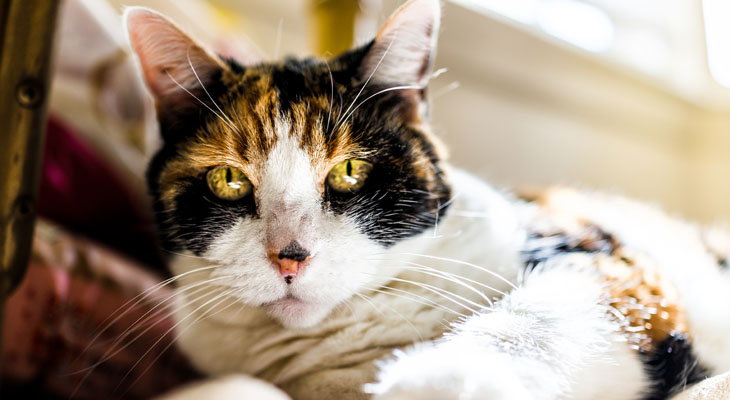
Advances in medical technology and preventative care are allowing pets to live longer, happier lives. It is not uncommon for cats to reach 20 plus years of age, and small dogs to live 14-16 years. More often pets are seen as a family member and people are looking for ways to spend as much time as possible with their beloved pets. Owners can improve their pet’s lifespan and quality of life with a few simple care guidelines. Improving your pets lifespan.
Weight Management – Add 2 years of life!?
Extensive research has been performed to evaluate the effects of obesity on lifespan and medical conditions, such as arthritis. Data shows that an ideal weight pet will live on average two years longer as compared to its obese littermate. Since pet owner’s control their cat or dog’s feedings, lifespan is directly influenced by an owner’s ability to regulate calories and provide adequate exercise.
There are many resources available for pet owners to help their pet’s lose weight. The first step is to schedule an appointment with your veterinarian to set a goal weight for your pet, calculate their calories needed for safe weight loss and create a weight loss plan.
There are many tools available to help pet owners achieve their pet’s weight loss goals. Talk to your veterinarian about what works best for your pet.
Regular Home and Professional dental Care-Add 4 years of Pet Life
Dental Care – Improving lifespan by up to 4 years!
Regular oral care and keeping a pet’s mouth healthy has been documented to add 4 years to their lifespan. Dental disease causes more than just oral pain and infection; it also impacts your pet’s organs, such as heart, liver and kidneys. Daily home dental care with products approved by the VOHC (Veterinary Oral health Council), will help keep your pet’s mouth healthy. This can include daily brushing, using a chew or water additive. Besides home care, pets also need professional dental cleanings, just like humans who go to the dentist. Your veterinarian will examine your pet’s mouth during their wellness exam and indicate when a dental cleaning is necessary.
Preventative Care/Annual Wellness Visits
Your veterinarian is available for more than just taking care of sick pets, he or she is your pet’s partner in preventative medicine. Yearly exams for pets under 7 years of age and twice yearly exams for pets over 7 years of age can identify problems before they become severe. Part of the wellness visit should include bloodwork to screen major organ functions such as your pet’s liver and kidneys. Any program to keep your pet healthy will include administering appropriate vaccinations, deworming and using products to prevent common illnesses such as Lyme disease.
For more information on dental cleaning please visit https://vcahospitals.com/know-your-pet/dental-cleaning-in-dogs. Interested in learning more able pet Obesity? Please visit our other blog post at https://www.zimmvet.com/blog/pet-obesity/
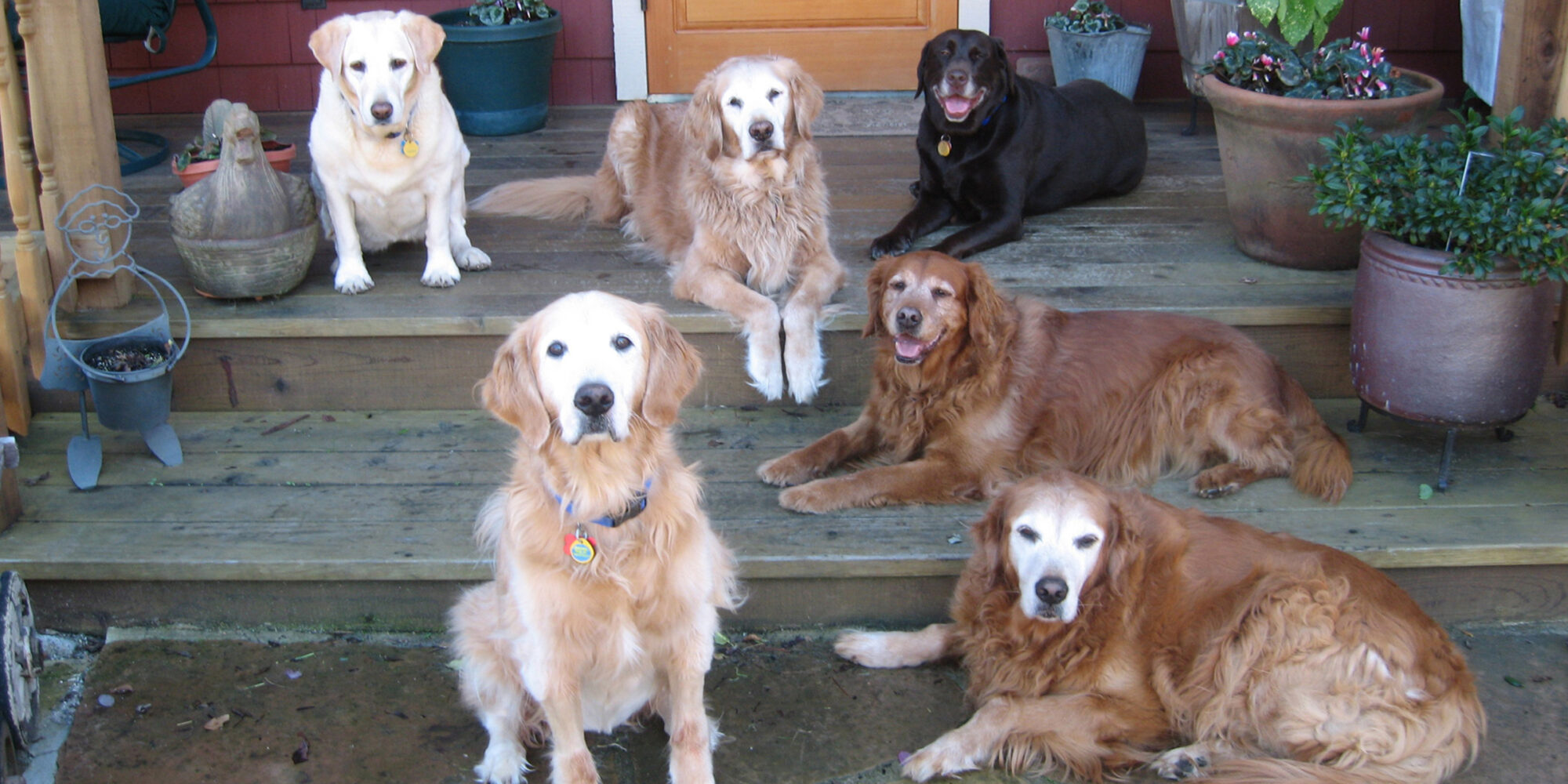
Disclaimer: This written content is meant to be educational and is not medical advice. Always consult a veterinarian about medical advice for your pet.
Heatstroke in your pet!
By Dr. Maria Krenz, DVM – ZimmVet-763-856-4848
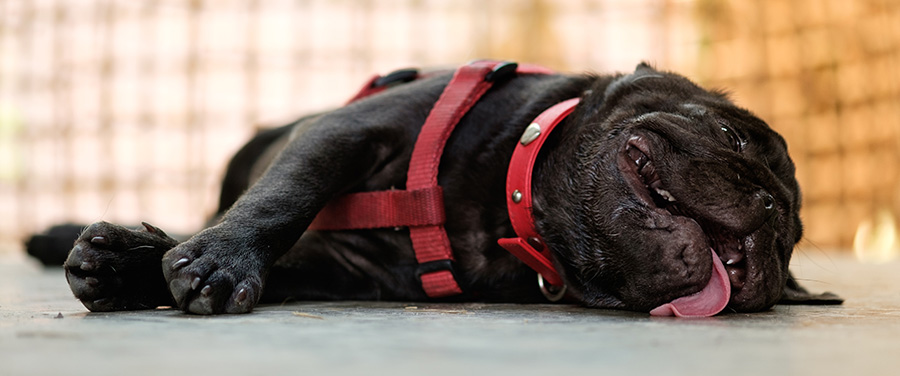
When a dog’s internal body temperature is above 105 degrees F, the dog may be suffering from heatstroke. Dogs have only a couple of ways to cool off—blood vessel expansion and panting. When dogs pant, they evaporate moisture from their tongues, nasal passages, and the lining of their lungs, and this cools them down as air passes over the moist tissue. They also cool off via vasodilation. Blood vessels, especially in the ears and face, expand, bringing overheated blood closer to the surface to cool down.
Signs of Heat Stroke
Heat Stroke in pets! Heatstroke in dogs is life-threatening and can also result in very serious complications. Recognizing early signs of heatstroke may help you remedy the condition before things get too serious. Early signs of heatstroke include:
- Heavy Panting
- Rapid Breathing
- Excessive Drooling
- Dry Mucous Membranes
- Bright red gums and tongue
- Skin that is hot to the touch
- High Heart Rate
Affected dogs become hyperactive and may have difficulty maintaining balance. As exposure to excessive heat goes on, the dog’s condition worsens and includes signs of shock, pale mucous membranes with white or blue gums, a very rapid heart rate, and a drop in blood pressure. The dog hyperventilates, and dehydration becomes more severe. Pupils dilate, the pulse becomes more irregular, and the dog has muscle tremors. They may become lethargic and unwilling to move, urinate or defecate uncontrollably, collapse, and become comatose.
Why Does Heat Stroke Occur?
Heatstroke generally occurs during the hottest part of the year, especially when it is humid. Contributing factors include: breed, age, physical fitness, if a pet is overweight, medical disorders and being in closed conditions such as a car.
How to Treat Heatstroke
Heatstroke therapy involves immediately trying to lower the dog’s body temperature. If you notice signs of heatstroke in your dog, it’s critical to stop any activity and help your dog cool down by:
- Walking or carrying the dog to a well-ventilated, cool area.
- Spraying or sponging the dog with cool (not cold) or tepid water, especially on the underside. Do not immerse the animal in cold water.
- Using a fan to blow cool air on them.
If at home cooling does not bring your dog’s body temperature below 103 degrees bring your dog to your veterinarian or local pet emergency clinic. Severely affected dogs require fluids, medication, support, and oxygen. Complications may not occur immediately, so it’s important to let your veterinarian determine the type of follow-up treatment required.
Conclusion
Heatstroke in Pets! Immediate action and correct treatment are so important because they can mean the difference between a swift and complete recovery and long-term complications.
Always provide plenty of cool fresh water, shade, and frequent rest periods when it’s hot. And never leave your dog in the car.
Please visit the AAHA website at https://www.aaha.org/your-pet/pet-owner-education/ask-aaha/how-can-i-prevent-heatstroke-in-my-pet/ for more information. More information on heatstroke and summer fun with your pet please visit our other blog post https://www.zimmvet.com/blog/wp-admin/post.php?post=885&action=edit.
Allergies in Pets
By Dr. Maria Krenz, DVM – Zimmvet (763)856-4848

Allergies in Pets
Imagine that you have burning eyes, itchy skin or hair loss, but without the ability to talk. Just like people, many pets suffer from allergies. If you have owned a pet with allergies, you know the common signs: skin redness, scratching, licking, chewing at the skin, ear and skin infections, hair loss, excessive paw licking among others. Pet allergies are a medical condition that requires lifelong management to control the symptoms. Some pets only have seasonal allergies, such as spring time, and need to start treatment prior to when allergy signs begin for best management.
Types of Allergies
- Atopic Dermatitis (Atopy) – Inhalation of pollens, molds and other things in the environment.
- Atopy is seasonal, one of the most common triggers in the spring time is Tree Pollen.
- Food Allergies – Allergies to certain foods such as chicken, beef, or pork.
Treatment Options
Pets that suffer from Spring allergies need to start treatment to manage the symptoms as soon as it starts getting warm. It is best to work with your veterinarian to create a plan that is best for your pet. Common treatments include the following.
- Antihistamines: Benadryl is a common medication used to control allergies. Speak to your veterinarian about how much and how often you can give your pet Benadryl. Other antihistamines include cetirizine, hydroxyzine and others.
- Shampoos: Often, pets with allergies have a poor skin barrier, which allows more allergens to get into the body. Bathing is usually needed at least every 2-3 days. Make sure you have shampoo that is made to help with itchy skin and allergies!
- Omega Fatty Acid Supplements: These supplements are a natural anti-inflammatory agent, and can help reduce itching and help with general skin health.
- Dermaquin: This product is a natural supplement that comes in a form as a soft chew. Dermaquin helps strengthen the skin barrier which decreases a pet’s allergic response.
- Apoquel: This is a very effective allergy medication. Apoquel directly affects the molecule that causes itch and inflammation in dogs. Apoquel is a tablet medication that is given daily.
- Cytopoint: This allergy treatment is an injection. The effects last about 4-8 weeks. Its mechanism is interrupting the pathway that causes itch and inflammation in dogs.
- Allergy treatments for food can include things such as changing the diet your pet is on.
Speak with your Veterinarian
Allergies can be a very frustrating condition for pet owners. Your veterinarian is here to help find the best treatment for your pet. Often, pets with allergies develop secondary bacterial and fungal skin infections that need to be treated with oral and topical medication. Ear infections are also common secondary condition that would needed prescription medication. For tough cases, your normal veterinarian may refer you to a veterinary dermatologist (skin specialist). Visit this website for more information https://vcahospitals.com/know-your-pet/allergy-general-in-dogs. If your pet is fearful of going into the clinic please visit this website for tips on how to make them more comfortable https://www.zimmvet.com/blog/successful-veterinary-visits/.
Disclaimer: This written content is meant to be educational and is not medical advice. Always consult a veterinarian about medical advice for your pet.
Canine Influenza
By Dr. Maria Krenz, DVM – ZimmVet-763-856-4848
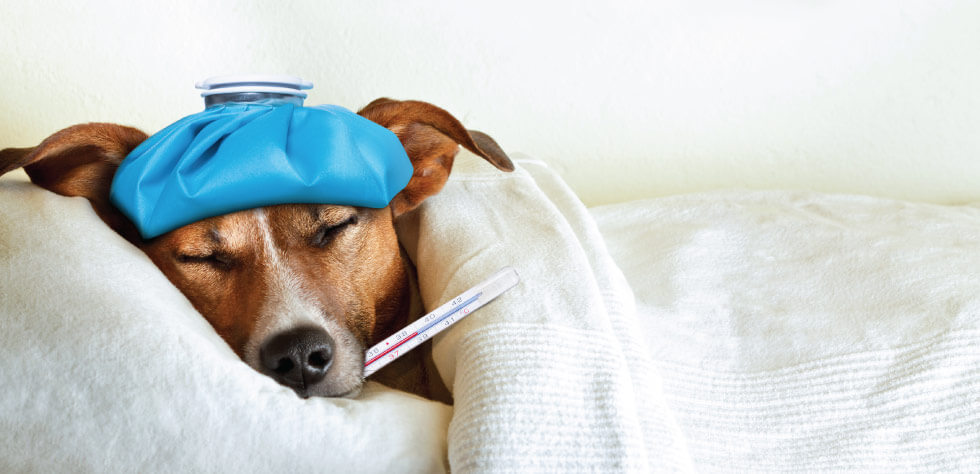
Canine influenza, or dog flu, has been in the news on and off when outbreaks occur. Recently there was an out break in the Minneapolis, Minnesota area that affected many. Make sure your dog is protected from the flu with the Canine Influenza Vaccination.
Spread of Dog Flu
Dog Flu is spread by direct dog-to-dog contact. The secretions from infected dogs coughing and sneezing can stay on objects and people that healthy pets may come in contact with. The virus is active in the environment for up to 48 hours, however, disinfectants can kill the virus. The flu is not seasonal, but can be contracted year round.
Signs and Treatments
Signs of Dog Flu may be mild to severe, but it can also be deadly. The signs of Dog Flu can look like other respiratory diseases such as kennel cough. Signs of Dog Flu can develop 2-4 days after exposure to an infected dog and illness may last up to 2-3 weeks. Signs can include:
- coughing
- sneezing
- nasal discharge
- eye discharge
- decreased appetite
- lethargy
- Fever
- In severe cases, a secondary bacterial infection can cause pneumonia. These pets have high fevers and trouble breathing.
Treatment includes antibiotics for secondary bacterial infections, fluids for dehydration, medication to reduce fever and nutritional supplements. If you notice any signs of illness, make an appointment with your veterinarian for an examination as soon as possible.
What dogs are at Risk?
Pets that are around other dogs are at higher risk of contracting canine influenza. Examples are pets that stay in a pet hotel, dog daycare, training class, dog parks and grooming facilities. Young and Senior Pets, along with pets that have medical conditions that affect their immune systems, are at higher risk of getting severe forms of the dog Flu.
Vaccination
A vaccination for Dog Flu is available. Dogs have no natural immunity to Dog Flu since it is a newer virus. The current vaccination is for both the H3N8 and H3N2 strains. If this is the first time your dog is getting the vaccination, it will need to be boostered in 3-4 weeks and then given yearly. This vaccination is recommended for dogs that are around other dogs frequently. This vaccination is available at ZimmVet. For more information on vaccines visit https://www.zimmvet.com/blog/canine-vaccine-overview/
In conclusion
As long as the facility you are bringing your pet to have good sanitation methods and protocols for disease outbreaks in place, you do not need to be overly concerned about bringing your pet around other dogs such as a Pet Hotel or Daycare. It is best practice that dog facilities require the flu vaccination to keep dogs healthy. If you are wanting more information you can visit the CDC website https://www.cdc.gov/flu/other/canine-flu/keyfacts.html.
**Disclaimer: This written content is meant to be educational and is not medical advice. Always consult a veterinarian about medical advice for your pet.
Dog Bite Prevention!
By Dr. Soderberg, DVM – ZimmVet – (763)856-4848
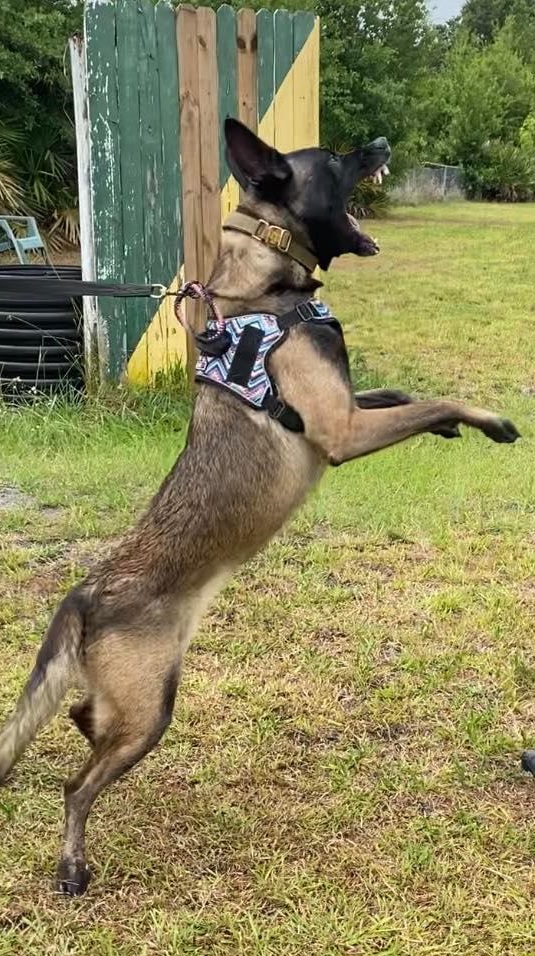
Dog bites pose a serious health risk to our communities and society. More than 4.5 million people are bitten by dogs each year in the United States, including more than 800,000 who receive medical attention for their injuries. More than half of those bitten are children.
Reasons a dog could bite:
- Dogs bite for a variety of reasons, but most commonly as a reaction to something.
- If the dog finds itself in a stressful situation, it may bite to defend itself or its territory. They can bite to protect something that is valuable to them, like their puppies, their food or a toy.
- Dogs can bite because they are scared or have been startled. They can bite because they feel threatened.
- Dogs might bite because they aren’t feeling well. They could be sick or sore due to injury or illness and might want to be left alone.
- Dogs also might nip and bite during play. Even though nipping during play might be fun for the dog, it can be dangerous for people.
- It’s a good idea to avoid wrestling or playing tug-of-war with your dog. These types of activities can make your dog overly excited, which may lead to a nip or a bite.
Preventing Dog Bites:
- Socialization is a good way to help prevent your dog from biting. Socializing your pet helps your dog feel at ease in different situations. Introducing your dog to people and other animals while it’s a puppy makes it feel more comfortable in different situations as it gets older. It’s also important to use a leash in public to make sure that you are able to control your dog.
- Responsible pet ownership builds a solid foundation for dog bite prevention.
- Carefully select the dog that’s right for your family
- proper training, regular exercise, and neutering or spaying your pet.
- Educate yourself and your children about how, or whether, to approach a dog.
- It’s important to know how to avoid escalating risky situations and to understand when you should and should not interact with dogs. Some risky situations include, but are not limited to:
- If the owner does not give permission to pet the dog, they are barking or growling, or if the dog appears to be hiding or seeking alone time.
- The dog is on the other side of a fence.
- If a dog is sleeping or eating, or playing with a toy.
- Sick or injured.
- Reading a dog’s body language also can be helpful. Just like people, dogs rely on body gestures, postures and vocalizations to express themselves and communicate. While we can’t always read a dog’s body language accurately, it can give us helpful clues as to whether a dog is feeling stressed, frightened, or threatened.
If you would like to learn more ways to make your pet into a well socialized good citizen please see https://www.zimmvet.com/blog/make-puppies-into-good-citizens-2/
More information:
If you have been bitten by a dog and the dog’s owner is present, request proof of rabies vaccination, and get the owner’s name and contact information. Clean the bite wound with soap and water as soon as possible and consult your doctor immediately or go to the emergency room if it’s after office hours.
Please visit https://www.avma.org/resources-tools/pet-owners/dog-bite-prevention for more information of Dog bite prevention.
Beautiful For You but Toxic To Your Cat!
By: Brook Buckholtz, CSR – Zimmvet (763)856-4848

Lilies are beautiful flowers! They can mean something special when put into a bouquet or could be a statement piece when put into your garden. Unfortunately the problem that arises is that Lilies are extremely toxic to cats, even one sniff could send them to the emergency clinic or be fatal. So if you want to ensure that your furry friends stay safe make sure you keep lilies out of your house and garden! Remember they are beautiful to you but toxic to your cat!
Signs of Lilly Toxicity:
Every part of the lily flower is toxic to cats. The pollen, the leaves, the flower itself and the stems. If you have lilies in a bouquet in your home even the water the lily plant sits in can cause severe damage to your pet. The best way to avoid this from happening is to keep lilies out of your house and garden if you have a cat.
Kidney failure can happen very quickly in cats that come in contact with Lilies. If you know that your cat has come in contact with Lilies seek veterinary care immediately. Signs of early toxicity include but are not limited to:
- Decrease activity level
- Drooling
- Vomiting
- Loss of appetite
- Increase urination
- Dehydration
Conclusion
Remember lilies are so toxic to cats that even just one sniff can cause them serious medical problems or even death. The best way to prevent this from becoming a problem is to keep lilies out of your home and garden. If you think your cat has come into contact with the lily plant seek veterinary care immediately! Below is a link to the FDA website which has more information on lily toxicity.
For more information please visit the FDAs webpage on Lily Toxicity in cats at https://www.fda.gov/animal-veterinary/animal-health-literacy/lovely-lilies-and-curious-cats-dangerous-combination#:~:text=The%20entire%20lily%20plant%20is,in%20less%20than%203%20days.
If you are considering adding new plants to your house or garden make sure to do your research! This blog post goes over some safe and unsafe house plants to pets. https://www.zimmvet.com/blog/house-plants-and-pets-2/


